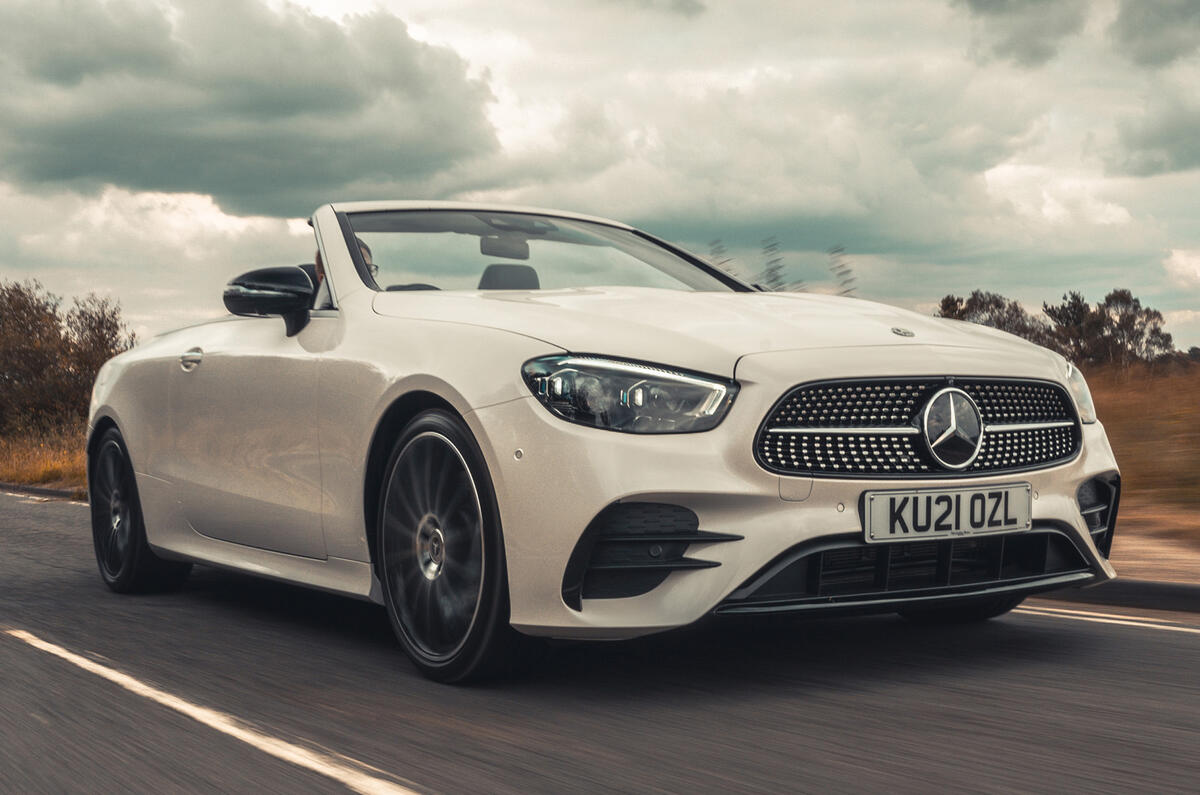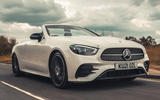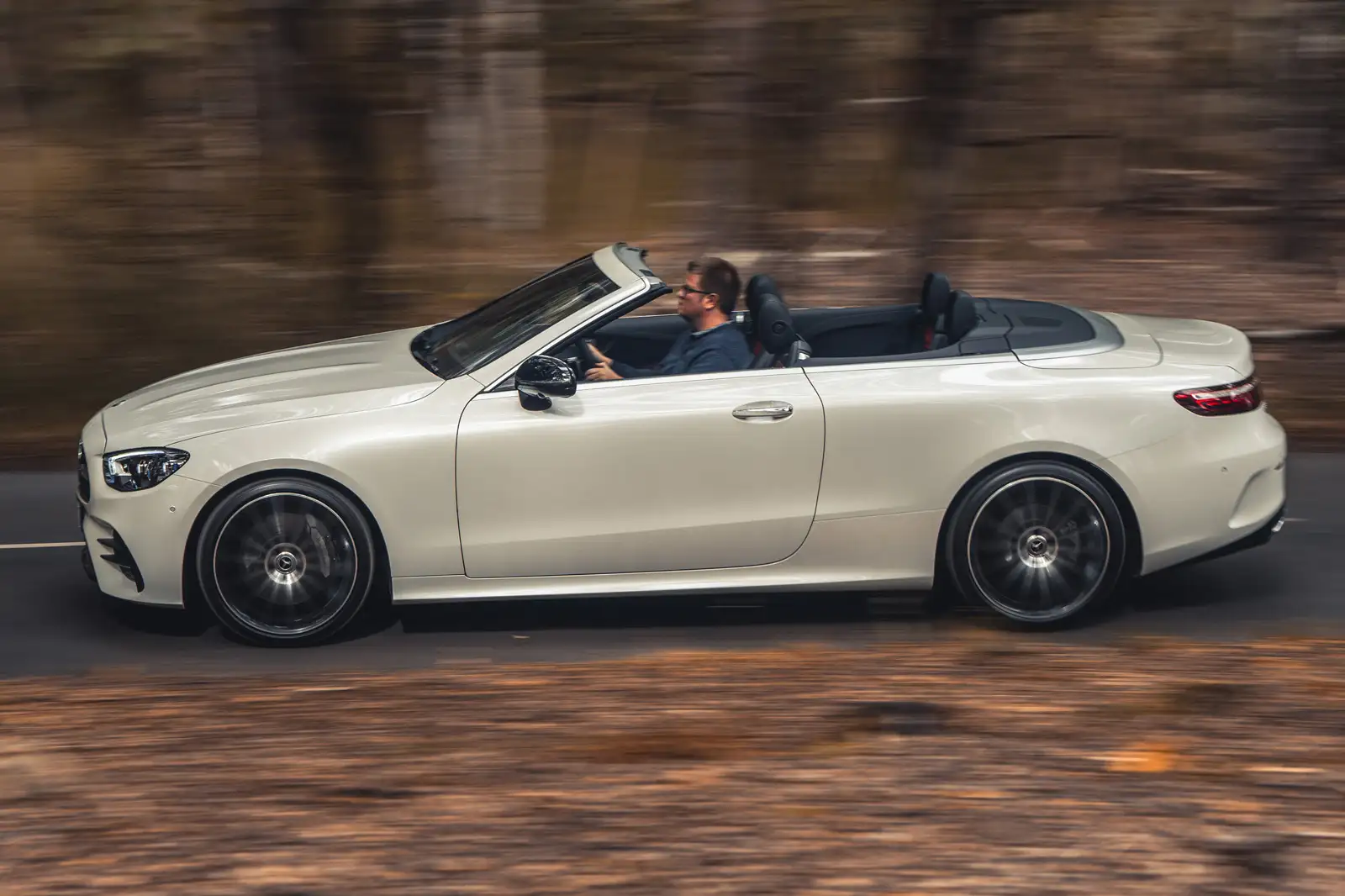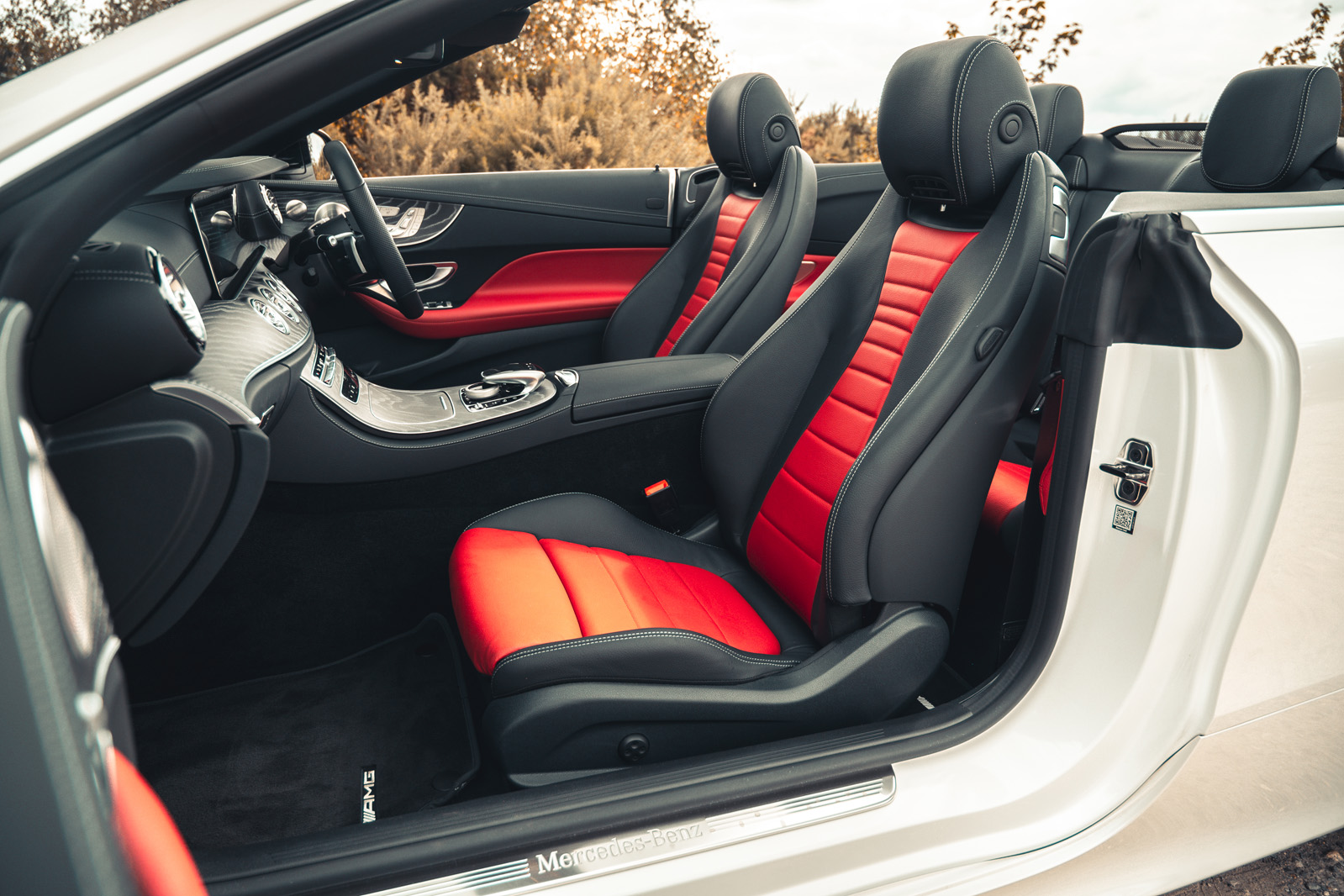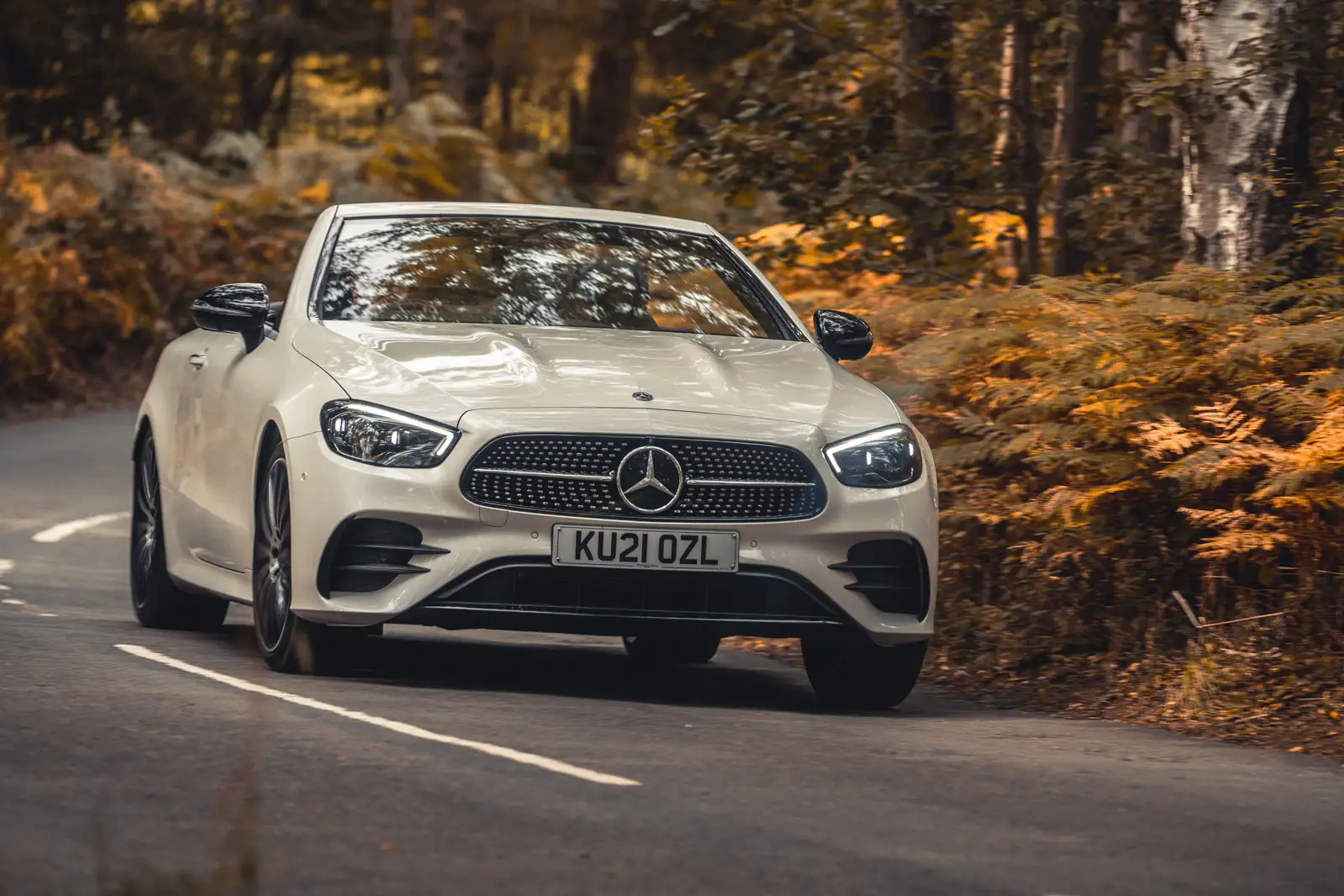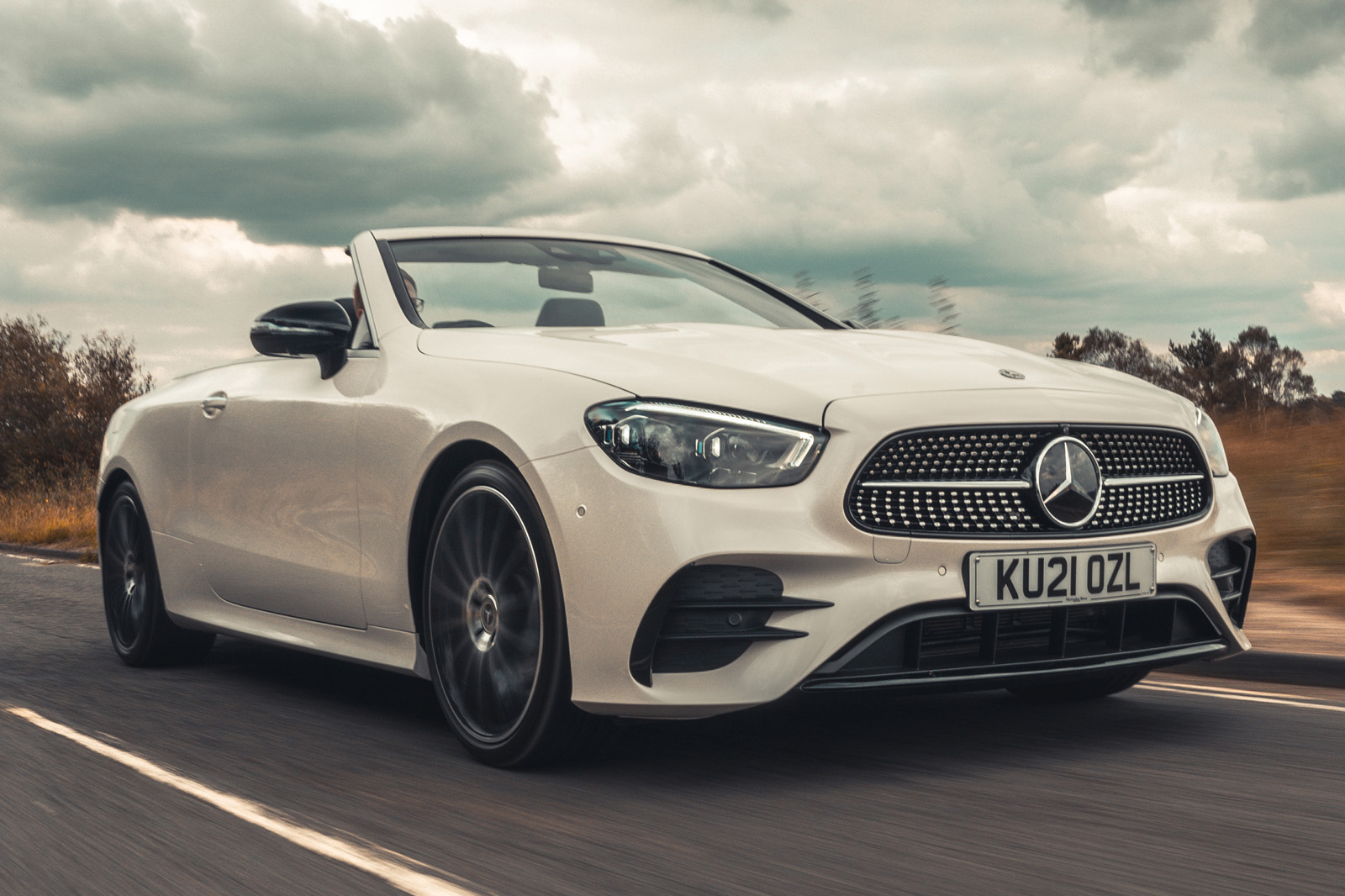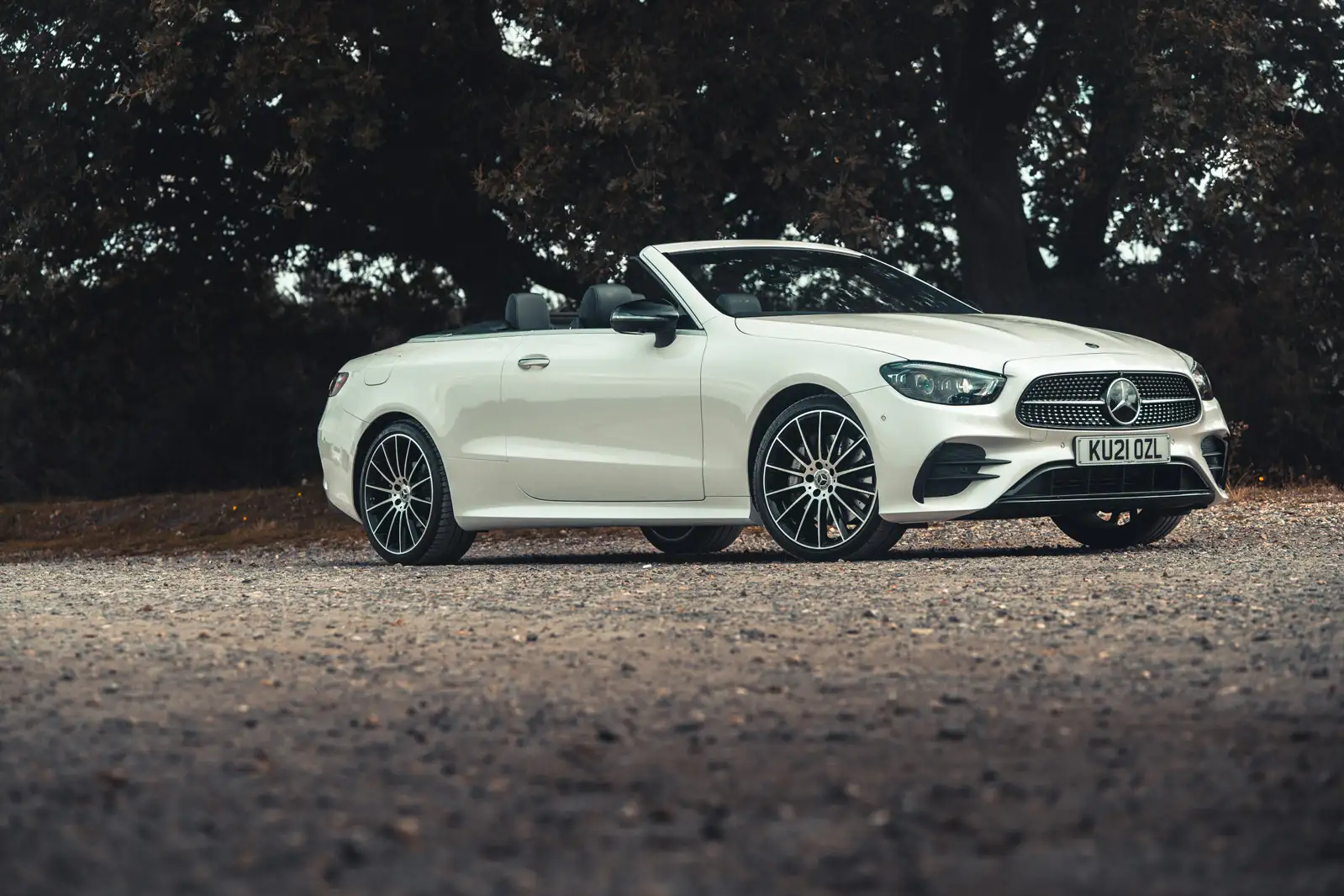While many of its rivals have been filing quietly out of the exit door of the cabriolet market over the past decade, Mercedes has persevered with them, selling not one but two medium-sized models, at least until the recent end of production of the last Mercedes-Benz C-Class. Being the bigger of the two, the E-Class Cabriolet ought to have practicality and size on its side and, within reason, so it proves.
The packaging compromises necessary to squeeze a motorised folding cloth roof on top of a Mercedes E-Class and to fold it away neatly behind the cabin mean this car isn’t as roomy as an Mercedes-Benz E-Class saloon. It still makes room for adults in its back seats, though.
If you’re new to convertibles, you might be surprised by the steep seatbacks in row two, and by the tapered cabin sides, which throw the two rear-seat travellers inboard a little. But even allowing for all that, and ignoring the tricky squeeze needed to get into and out of the back, smaller adults can travel comfortably enough over shorter distances here. You feel particularly enclosed and have scant view of the world outside in the back with the hood up, and you’re often a little blustered and bothered at speed by the passing air with it down, but there’s at least half-decent room for you – and where supposed four-seat cabriolets are concerned, that’s rare.
Up front, the E-Class twin-screen layout, jet-engine-style air vents and covered rotary-style infotainment device are all welcome reminders of an age in cabin design that Mercedes seems all too keen to move beyond at the moment. But the fact is that there really isn’t much wrong with the way the car’s dashboard and driving environment look or feel; the ease with which you can interact with its various systems and technologies; or the upmarket allure that the whole car conjures. The driver’s seat is presented at a convenient height. In a car of greater dynamic ambitions and purposes, you might prefer a lower perch, but in a luxury cruiser of very little sporting pretence, the usefully contoured and comfortable chairs do very nicely. They offer electric heaters but no cooling or massage function, even as an option, which might have been useful in an indulgently relaxing open-top car.
As for cargo practicality, the boot is usefully long and wide and could carry a couple of good-sized suitcases and a soft bag or two. As in all convertibles of this type, though, its volume is eaten into significantly when the roof is folded back – at which point 250mm is all the loading height it can muster.
Infotainment and sat-nav
The infotainment and instrumentation system in the E-Class, with its two 12.3in screens, has done the rounds in Mercedes’ current models, and there’s a new set-up in the latest Mercedes S-Class and the EQS, of course. But if you like easy usability, crisp and colourful graphics, and plenty of physical shortcut keys to help you navigate your way around, this set-up shouldn’t feel old-hat; and if you like a rotary input device rather than a touchpad, you might prefer the Cabriolet to the Coupé. (The only way Mercedes can package the hood controls of the convertible is by fitting the old-style rotary device on the transmission tunnel.)
The system offers networked navigation, wireless device charging, mirroring for both Apple and Android smartphones and full voice control for no extra cost. Our test car also had Mercedes’ Burmester surround audio system, fitted as part of the Night Edition pack, which produced music with plenty of power and definition.
Mercedes added augmented reality navigation to the system as part of the latest facelift, although it’s displayed on the central navigation screen rather than on a head-up display so it can be a bit distracting.



